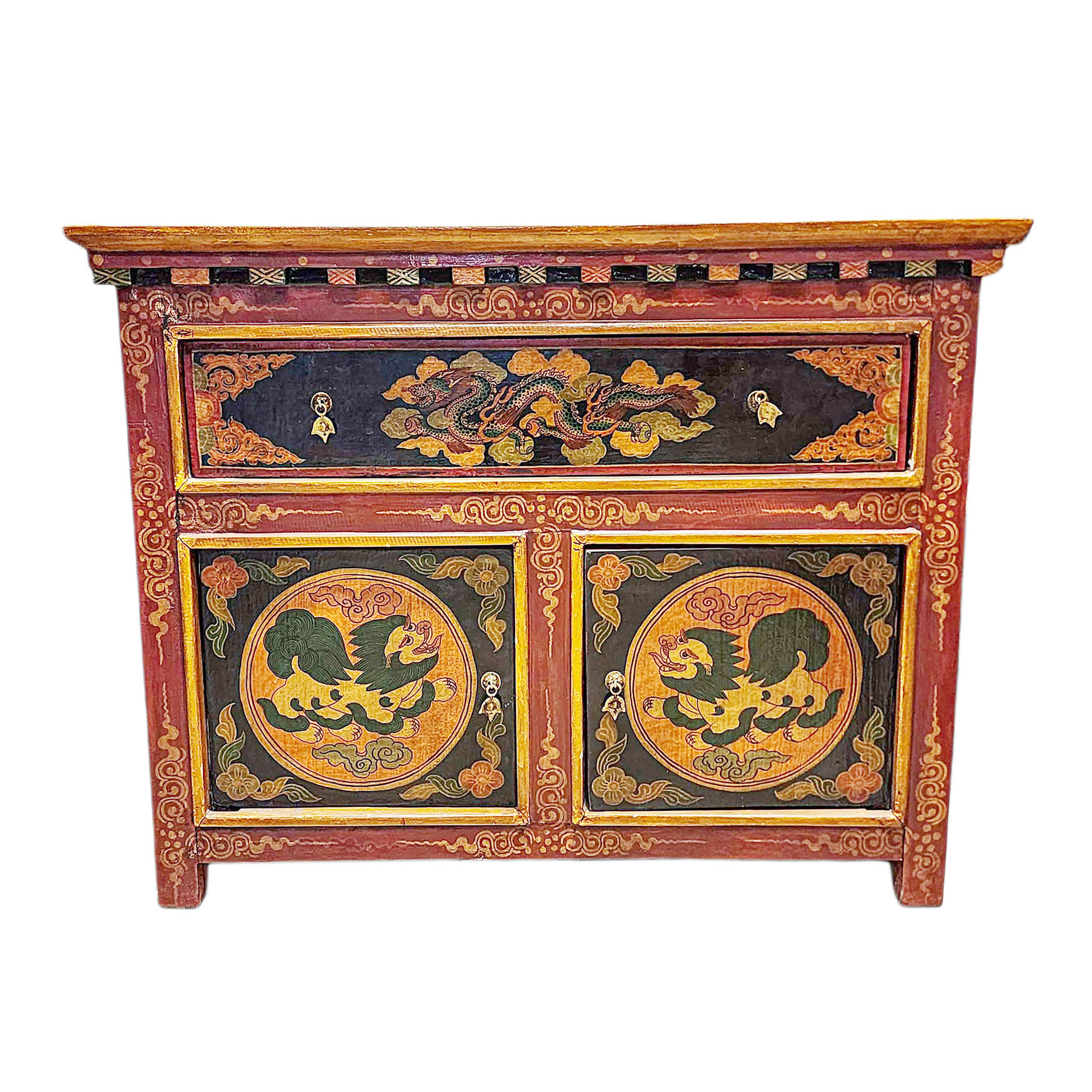Wooden Cabinet
This exquisite Tibetan-style wooden cabinet, handcrafted and painted in Nepal, is a stunning blend of functionality and cultural artistry. Made from high-quality wood by skilled Nepali artisans, each piece is unique, showcasing meticulous hand-painted designs with vibrant colors and intricate motifs reflective of Tibetan spirituality and heritage. The cabinet provides ample storage with spacious shelves and compartments, making it ideal for various spaces in your home, such as the living room, bedroom, or entryway. Its rich detailing and auspicious symbols not only offer a touch of elegance but also embody a deep cultural significance, believed to bring good fortune and harmony. More than just a piece of furniture, this cabinet is a timeless art piece that elevates your decor while preserving the vibrant traditions of Tibetan and Nepali craftsmanship.
Read More
Dragon : About Dragon
A dragon is a large, serpentine legendary creature that appears in the folklore of many cultures around the world. ... Dragons in eastern cultures are usually depicted as wingless, four-legged, serpentine creatures with above-average intelligence. The earliest attested reports of draconic creatures resemble giant snakes.
Snow lion : Brief Introduction
The Tibetan Snow Lion is a symbol of power, strength, and fearlessness in Tibetan culture and Buddhism. It represents the protector of the Buddhist teachings and the harmony between mind and nature. Often depicted in pairs, the Snow Lions are believed to protect the land, stand as guardians of the Dharma, and symbolize unconditional cheerfulness.
A “Tibetan Snow Lion set” typically refers to decorative or artistic items, often statues, carvings, or depictions of these majestic creatures in pairs. These sets are crafted in various forms, such as metal, wood, or stone, and are used as both spiritual symbols and decorative items in homes, temples, and monasteries. The Snow Lion is often portrayed in a powerful stance, sometimes with one paw raised, and with flowing manes and tails, indicating their wild, untamable nature.
In Tibetan Buddhism, they are also associated with the concept of fearlessness and the ability to overcome obstacles.
Read More
About Color Finishing
The Wooden Cabinet is adorned with traditional colors, creating a captivating aesthetic through a combination of gold and various hues. This painting technique follows a time-honored process that aims to faithfully represent the Wooden Cabinet in accordance with traditional color descriptions. In the context of Buddhist statues, this approach holds great significance. Each statue has its own primary color, and it is crucial to depict the statue in its authentic shade.
This adherence to color accuracy is akin to the meticulous artistry seen in thangka paintings. To achieve this finishing, organic colors and genuine gold are used, while the expertise of a skilled thangka artist is sought, as painting on a metal surface requires a distinct set of skills to bring out the elegance and beauty of the statue.
By employing this traditional coloring method, the Wooden Cabinet is not only aesthetically pleasing but also maintains its cultural authenticity, paying homage to the rich traditions and practices associated with Buddhist art.
Read More
